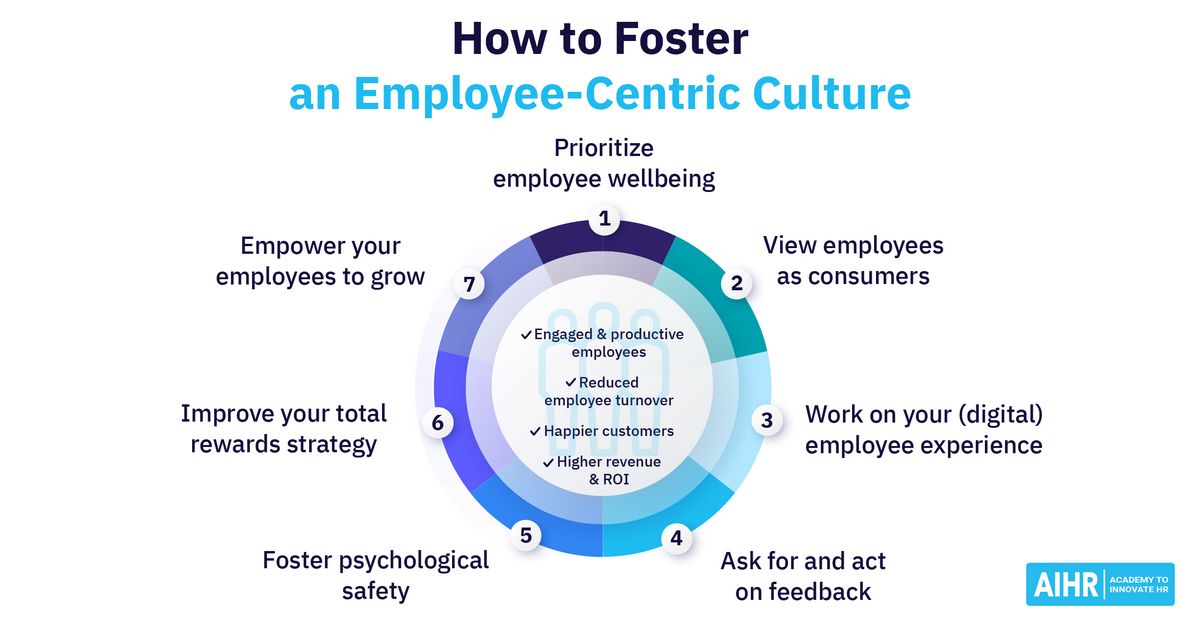
How to Create a More Employee-Centric Workplace Culture
An employee-centric workplace encourages communication, ideas, creativity, and innovation throughout the organization. With the pandemic leaving employees feeling isolated, companies are redesigning the workplace experience to prioritize the needs and wellbeing of their people.
To create a more employee-centric and inclusive workplace, company leaders and HR managers should focus on four areas:
1. Encourage flexibility and offer choices
Companies should embrace the trend of remote work and allow employees to work how, when, and where they prefer. Working Families’ survey found that 9 out of 10 working parents want more flexibility post-COVID-19. An employee-centric workplace should provide hot desks, private working booths, and open cafeteria-style workspaces that recreate the feeling of working from home or a coworking space.
Square, for example, adopted a "task-based" layout in their San Francisco office, allowing employees from different departments to freely interact. The layout creates a flexible work environment that can be personalized according to each employee’s preferences.
2. Create an empathetic workspace
Workers value empathy in the workplace, with one in three employees willing to jump ship to a more empathetic company, according to a Businessolver survey. To foster empathy, companies should train management and employees to listen attentively and encourage open communication. Company leaders should lead by example and create a culture where employees feel safe to express their concerns.
Effective listening requires asking specific, compassionate, and constructive questions. This approach shows that you care and want to help.
3. Prioritize employee health and wellness
Companies should prioritize mental wellbeing and physical health. The COVID-19 pandemic highlighted the importance of health. Companies can conduct health risk assessments to understand employee needs. For example, PriMed Management Consulting surveyed its employees and discovered stress as a major risk. Based on the survey, they implemented measures like after-work exercise programs and guided meditation sessions.
Ergonomics is another important aspect of employee wellbeing. Many employees working from home experience musculoskeletal issues due to improper workstations. Companies should revamp their office spaces to provide ergonomic solutions such as standing desks, ergonomic chairs, and properly configured workspaces.
4. Foster a culture of continuous learning
An employee-centric workplace encourages continuous learning to prevent stagnation. Companies can establish education assistance programs, mentorship opportunities, or student loan repayment plans. This fosters personal and professional growth and helps retain employees.
The benefits of an employee-centric workplace include improved motivation and productivity, reduced turnover rates, a happier workforce, and better talent attraction and retention.
In conclusion, companies must prioritize the wellbeing of their employees to meet the expectations of today’s fluid workplace. By focusing on creating an employee-centric culture, companies can nurture their most valuable asset—their people.
Hello!
I’m Andrew Brooks, a seasoned finance consultant from the USA and the mind behind phonenumber247.com.
My career is built on a foundation of helping individuals and businesses thrive financially in an ever-changing economic landscape. At phonenumber247.com, my aim is to demystify the complex world of finance, providing clear, actionable advice that can help you navigate your financial journey with confidence. Whether it’s personal finance management, investment strategies, or understanding the nuances of market dynamics, I’m here to share insights and tools that can propel you towards your financial goals.
Welcome to my digital space, where every piece of advice is a step closer to financial clarity and success!
